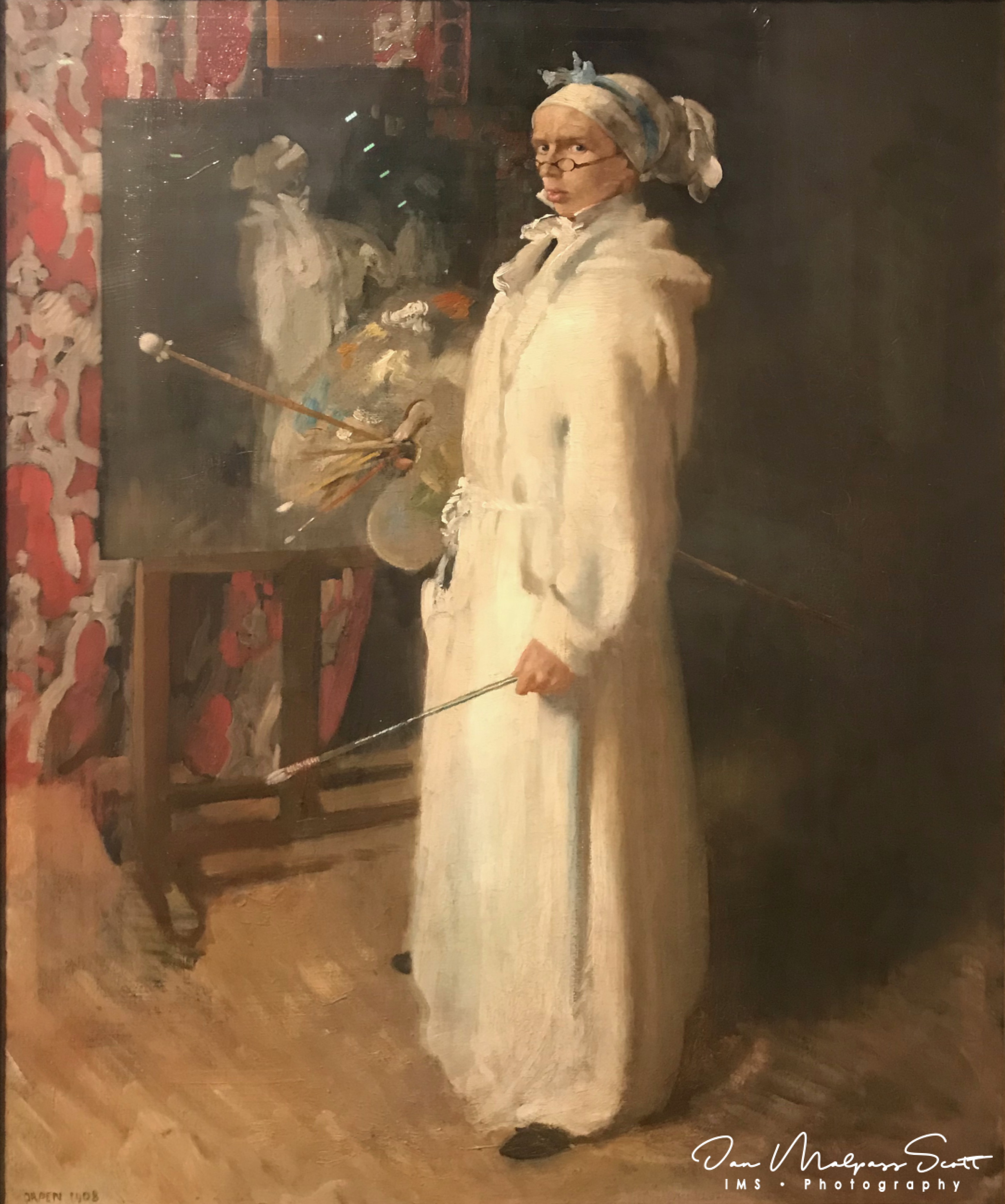Executed 1908, oil on canvas 92.8 x 72.1 cm. Bequeathed by John George Joicey, 1919
Shown as part of the fantastic Glenn Brown: Fantasy Landscapes, Portraits and Beasts exhibition at the Laing, this is a striking self-portrait by the (historically) largely dismissed artist William Orpen. Looking at this painting it’s hard to understand why it has taken so long for his art to be appreciated.
Major Sir William Newenham Montague Orpen, KBE, RA, RHA (27 November 1878 – 29 September 1931), was an Irish artist who worked mainly in London. Orpen was a fine draughtsman and a popular, commercially successful, painter of portraits for the well-to-do in Edwardian society, though many of his most striking paintings are self-portraits.
During World War I, he was the most prolific of the official artists sent by Britain to the Western Front. There he produced drawings and paintings of ordinary soldiers, dead men, and German prisoners of war, as well as portraits of generals and politicians. Most of these works, 138 in all, he donated to the British government and they are now in the collection of the Imperial War Museum.
His connections to the senior ranks of the British Army allowed him to stay in France longer than any of the other official war artists, and although he was made a Knight Commander of the Order of the British Empire in the 1918 King’s birthday honours list, and also elected a member of the Royal Academy of Arts, his determination to serve as a war artist cost him both his health and his social standing in Britain.
After his early death, a number of critics, including other artists, were loudly dismissive of his work and for many years his paintings were rarely exhibited, a situation that only began to change in the 1980s.


